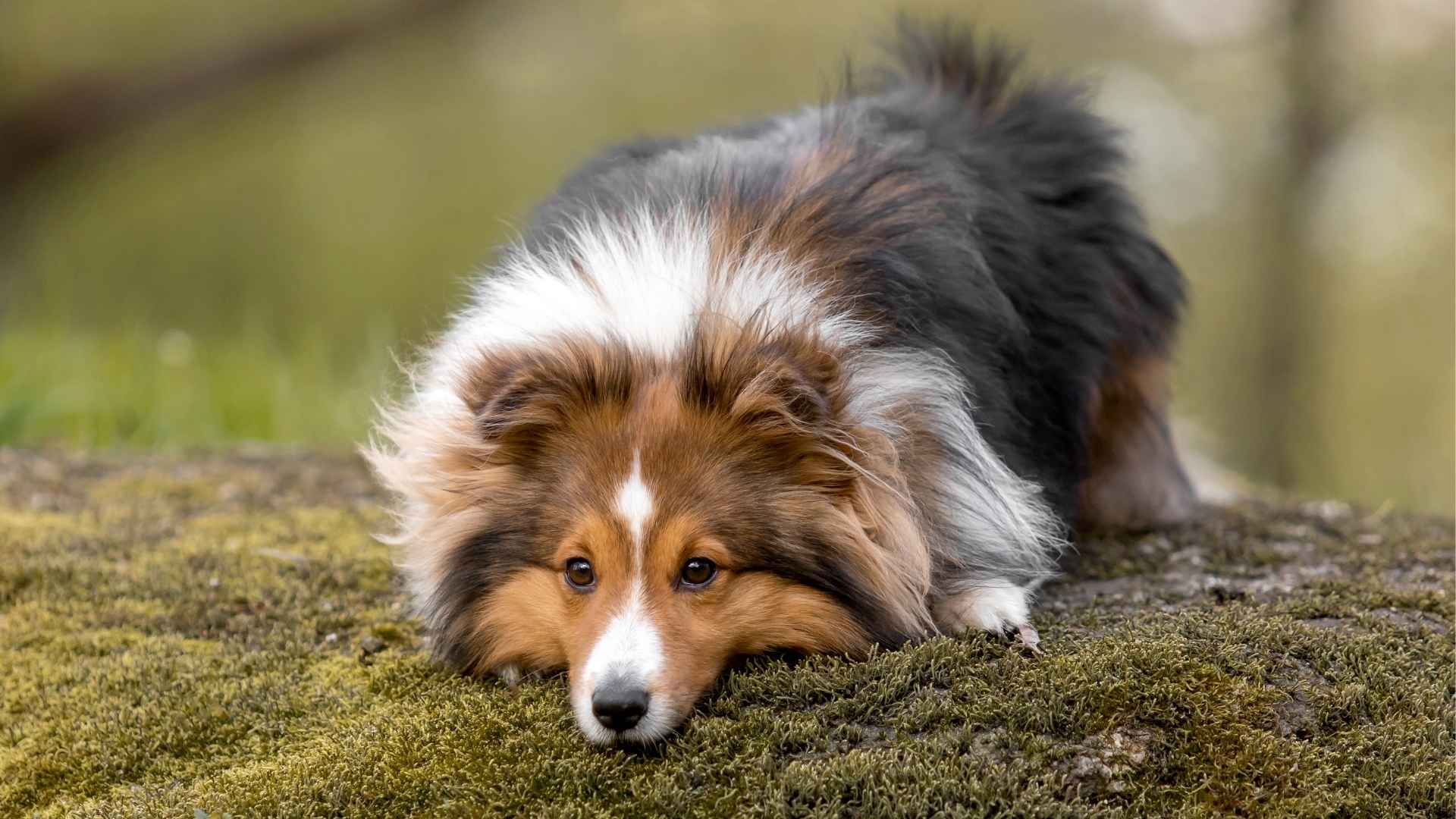Some dogs wear their hearts on their furry little sleeves. These sensitive souls feel everything—loud noises, sudden changes, even your vibe when you walk in the room. For them, the world can be overwhelming, and anxiety isn’t just a passing phase—it’s a part of daily life they need help navigating.
These aren’t “bad dogs” or “overreactors”—they’re emotional sponges. Whether it’s severe separation anxiety when you leave for work or panic during a thunderstorm, these pups need extra comfort, calm routines, and lots of reassurance. Think of them as the introverts of the canine world—deep feelers who love deeply but are easily unsettled by chaos or loneliness.
If you’ve got one of these tender-hearted dogs, you already know: their fears are real, and their loyalty is unmatched. They don’t just want to be near you—they need human family members. Understanding their anxious tendencies isn’t about coddling—it’s about connection.
So whether you’re looking to support your anxious pup better or wondering which breeds are more prone to nerves, this list shines a spotlight on those delicate yet devoted dogs who just feel… a little too much.
10 Dog Breeds Prone To Severe Anxiety
1. Labrador Retriever

Labrador Retrievers are basically the all-star MVPs of the dog world — versatile, intelligent, and famously friendly.
Whether it’s fetching your morning paper, guiding someone through life, or just being the ultimate family buddy, Labs shine bright. But don’t let their sunny personalities fool you — behind those wagging tails is a sensitive soul that can be prone to anxiety.
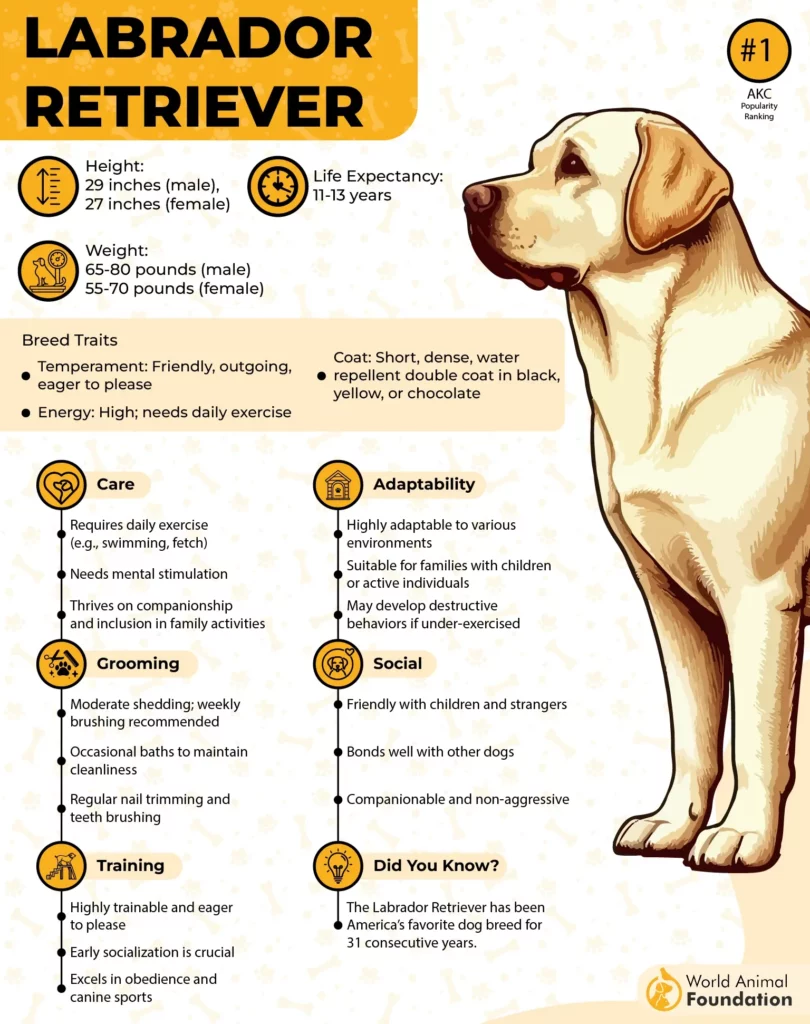
Why the Anxiety? Labs are incredibly attached to their humans and thrive on being part of the pack. When left alone or faced with sudden changes, their happy-go-lucky vibe can flip into separation anxiety or stress.
How to Help: Keep them busy with exercise, mental games, and plenty of love. Gradual alone-time training and a consistent routine help ease their nerves. A cozy crate or safe space can be their “comfort zone” when you’re out.
If you leave a Lab solo for too long, expect some classic “I’m missing you” behaviors — chewing up your favorite shoes, barking like they’re auditioning for a concert, or even accidents inside the house.
2. German Shepherd
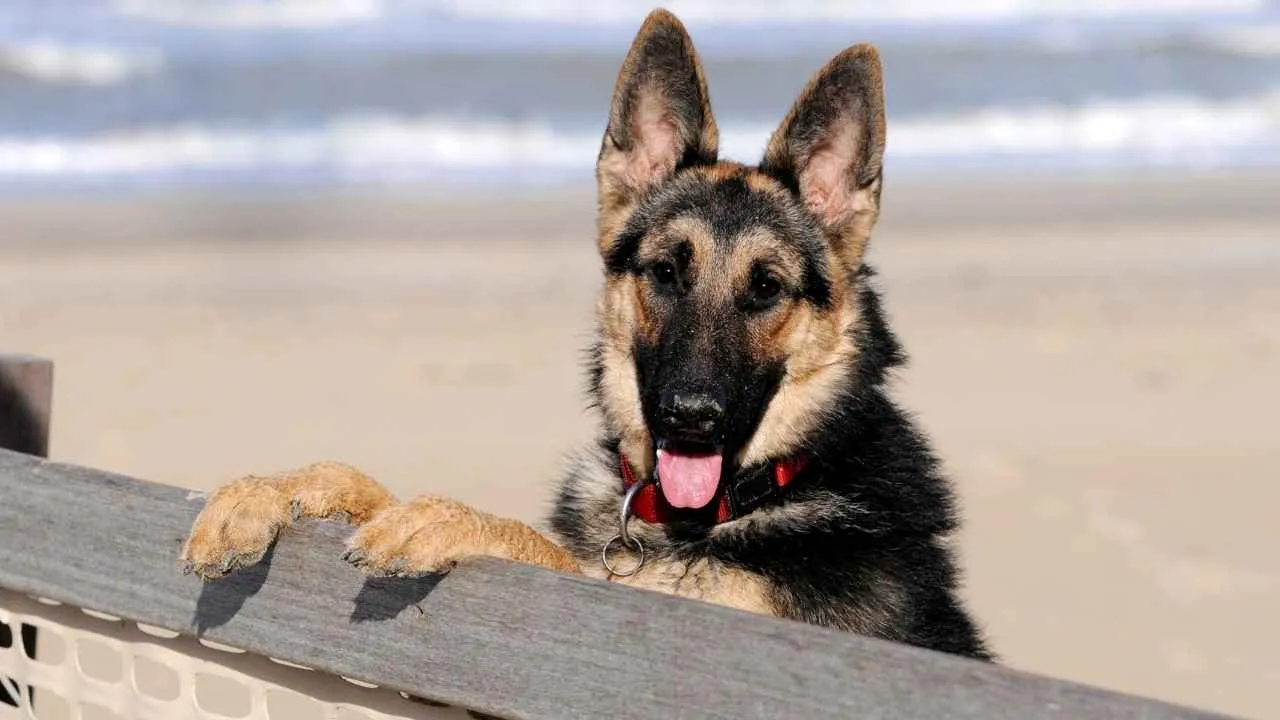
German Shepherds are basically the most versatile working breeds: smart, brave, and fiercely loyal. Their resume reads like a VIP list — police dog, service dog, military dog — you name it. But beneath that confident exterior lies a heart that can be surprisingly prone to anxiety.
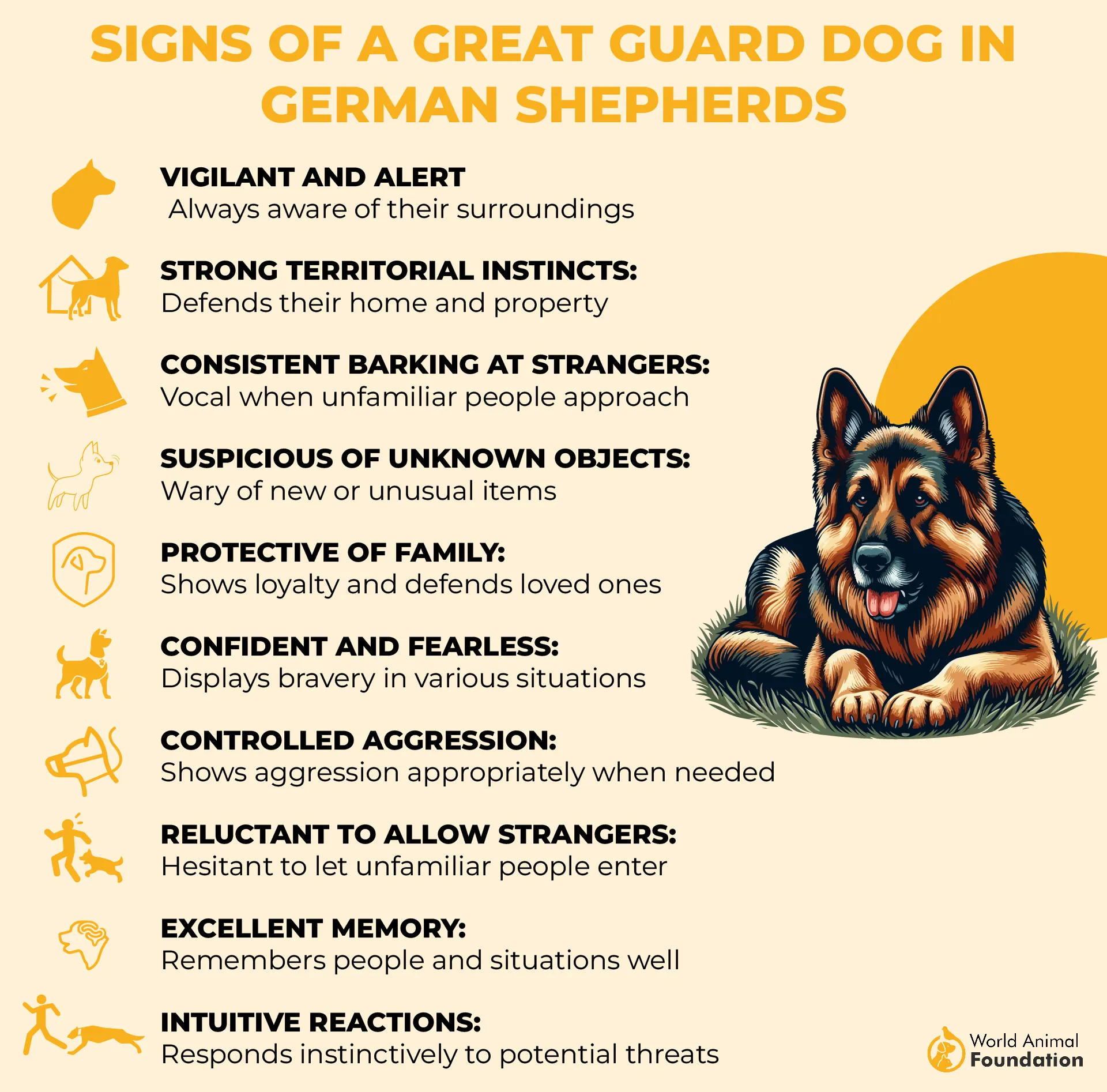
German Shepherds aren’t naturally aggressive, but their strong protective instincts can make them cautious around strangers at first.
They’re usually gentle with kids and other pets, though issues like aggression can develop if they’re left alone too much or don’t get enough physical activity.

Why the Anxiety? Their strong protective instincts and deep bond with their humans mean they feel everything intensely. Without enough mental stimulation and structure, their minds can spiral into worry, especially if they sense something’s off.
How to Help: Daily physical exercise combined with challenging training sessions keeps their minds sharp and worries at bay. Early socialization and a stable routine are key.
German Shepherds often show anxiety through restlessness, barking, destructive or anxious behaviors when bored or left alone too long. They want to protect and be close, which can be a tough balance.
If you want a brave, intelligent companion who’s also your biggest emotional fan club, the German Shepherd is a powerful protector with a heart that sometimes needs a little extra TLC.
3. Australian Shepherd
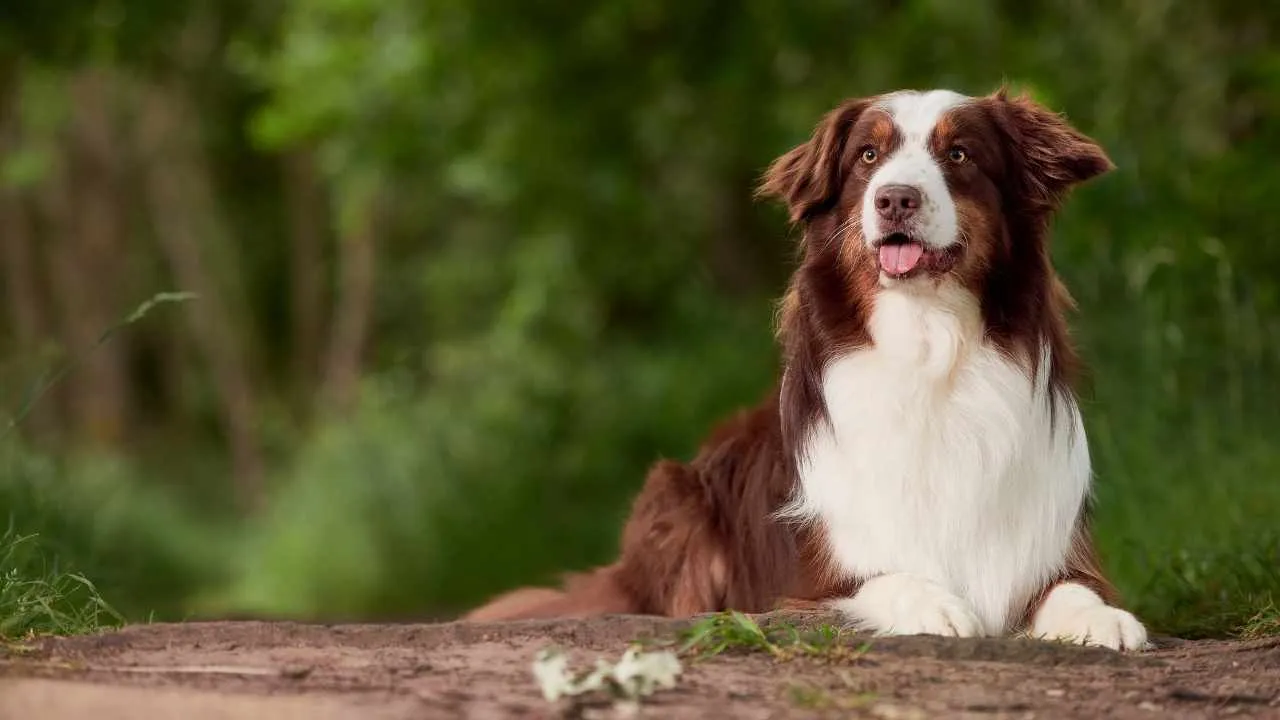
Australian Shepherds are like the overachievers of the dog world—smart, energetic, and always ready to work. But with all that brainpower and energy comes a tendency toward anxiety, especially when left bored or isolated.
Australian Shepherds are medium-sized dogs known for their high intelligence and energetic nature. These herding dogs have strong herding instincts and a muscular, agile physique. Typically, they stand about 18 to 24 inches tall and weigh between 40 and 65 pounds.

Why the Anxiety? These highly intelligent dogs thrive on mental and physical stimulation. Without a job or activity, their brilliant minds can spiral into worry or stress, sometimes leading to anxiety-driven behaviors.
How to Help: Keep them busy with training, agility, herding, or interactive toys. Predictable routines and plenty of affection help calm their busy minds.
Australian Shepherds are energetic dogs who thrive when given a purpose or task. They’re recognized for their intelligence and loyalty, usually friendly by nature, though they may need some time to feel comfortable around new people.
This breed can get nervous around new people or changes in routine, often reacting with barking or pacing — basically saying, “Wait, what’s happening?!”
4. Jack Russell Terrier
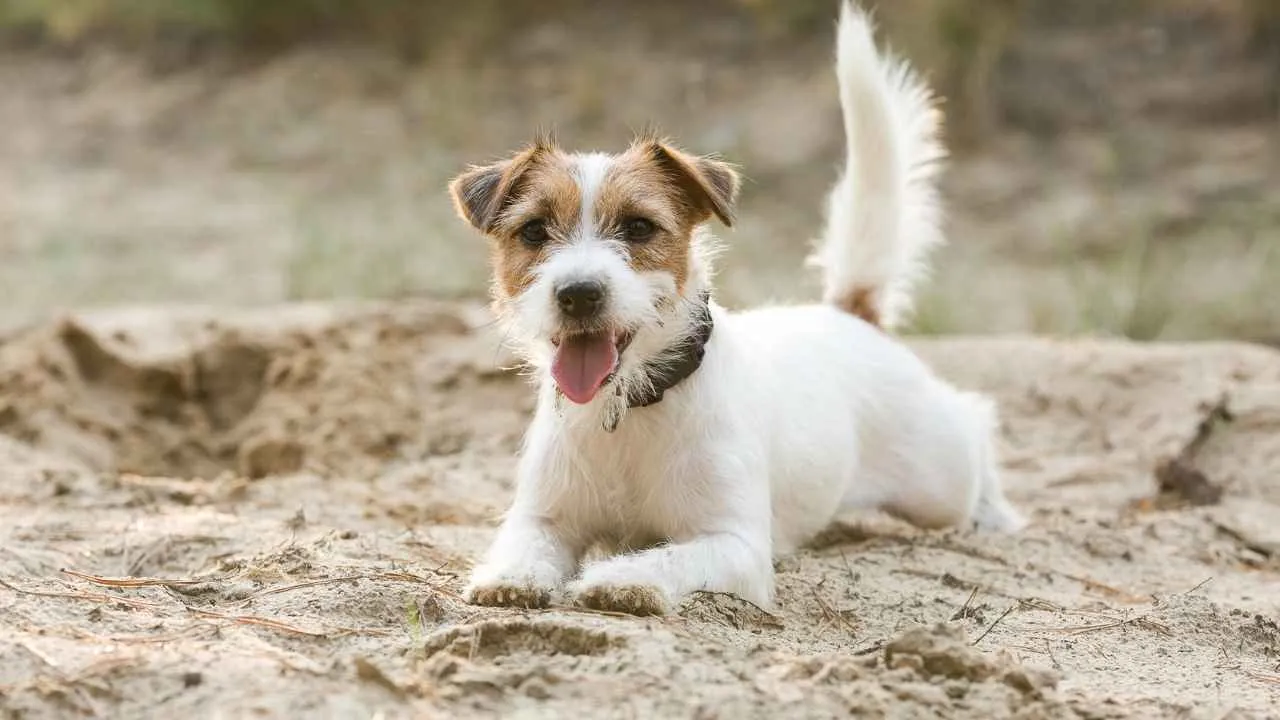
Jack Russells pack a lot of personality into a small frame — and that includes a surprising amount of anxiety.
Their small stature—standing 10 to 12 inches tall and weighing between 9 and 15 pounds—made them easy to carry on horseback and agile enough to navigate underground tunnels while hunting. These energetic dynamos get bored and stressed quickly, which can lead to the development of destructive behaviors.
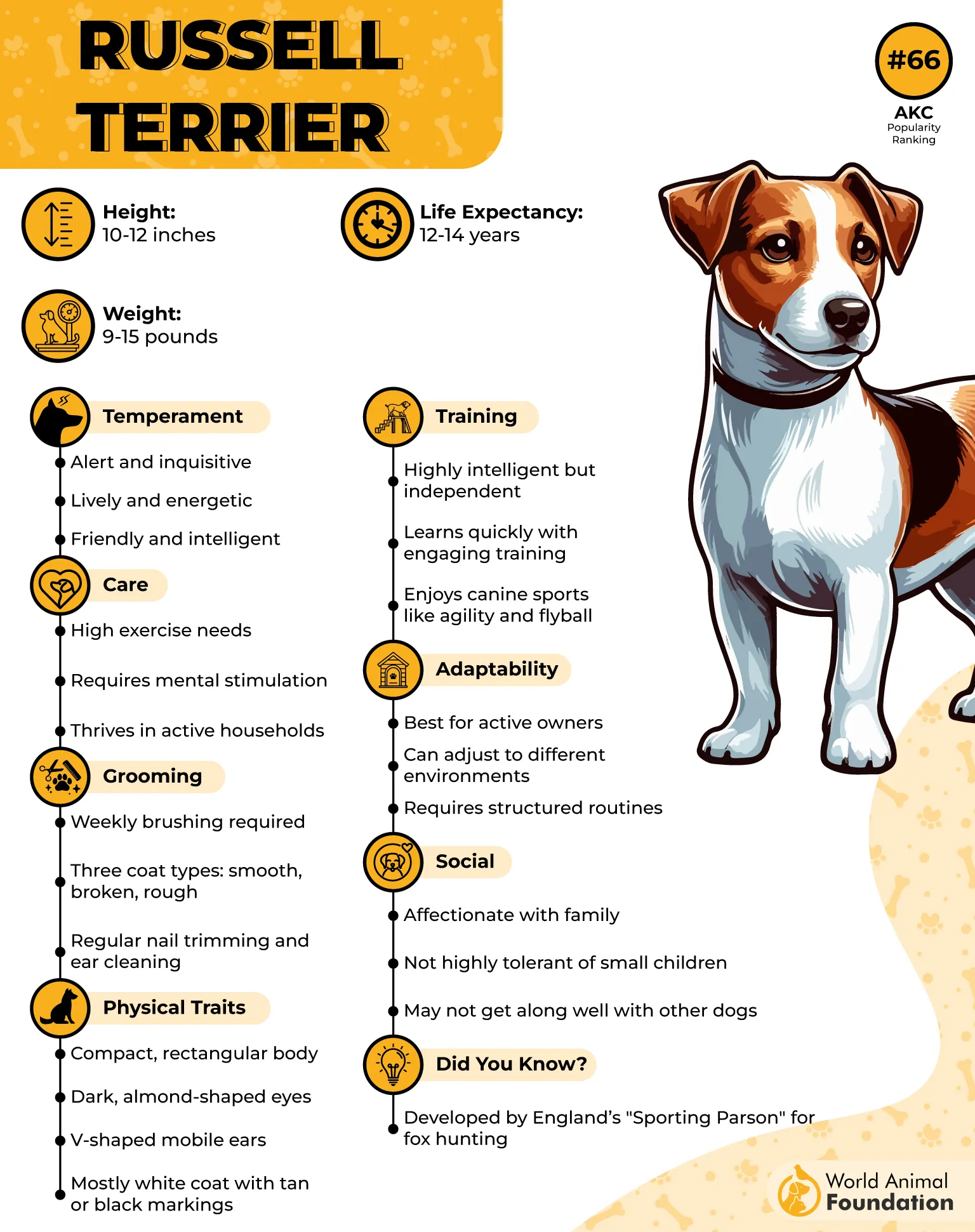
Why the Anxiety? Their intense drive and high energy can turn into nervousness if they don’t get enough physical and mental outlets.
How to Help: Regular exercise, agility training, and mental games are essential. Proper early socialization and calm reassurance go a long way, too.
Although charming and loving, they can be quite challenging to train and handle, making them better suited for experienced dog owners. This playful little dog might appear to be an ideal fit for first-time pet parents and apartment living, but their needs can be more demanding than expected.
Jack Russells might become vocal, destructive, or hypervigilant when anxious — think of them as the dog world’s equivalent of a caffeine-fueled overthinker.
5. Vizsla
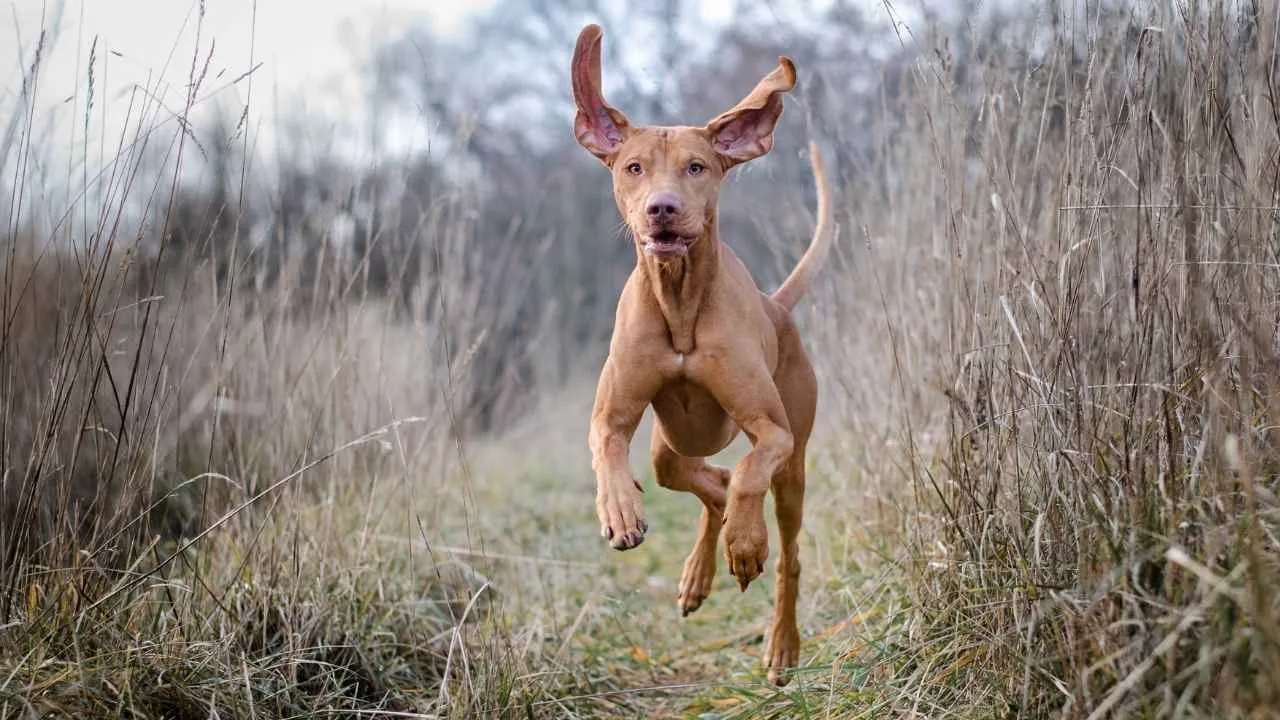
Meet the Vizsla, Hungary’s pride and joy—a sleek, rust-colored bundle of affection, energy, and, well… separation anxiety. The lively and upbeat Vizsla originated in Hungary, where it was bred as a hunting companion.
These prized athletes—whose name comes from the Hungarian word for “pointer”—feature a sleek, red-golden coat, typically weigh between 55 and 60 pounds, and stand about 22 to 24 inches tall.
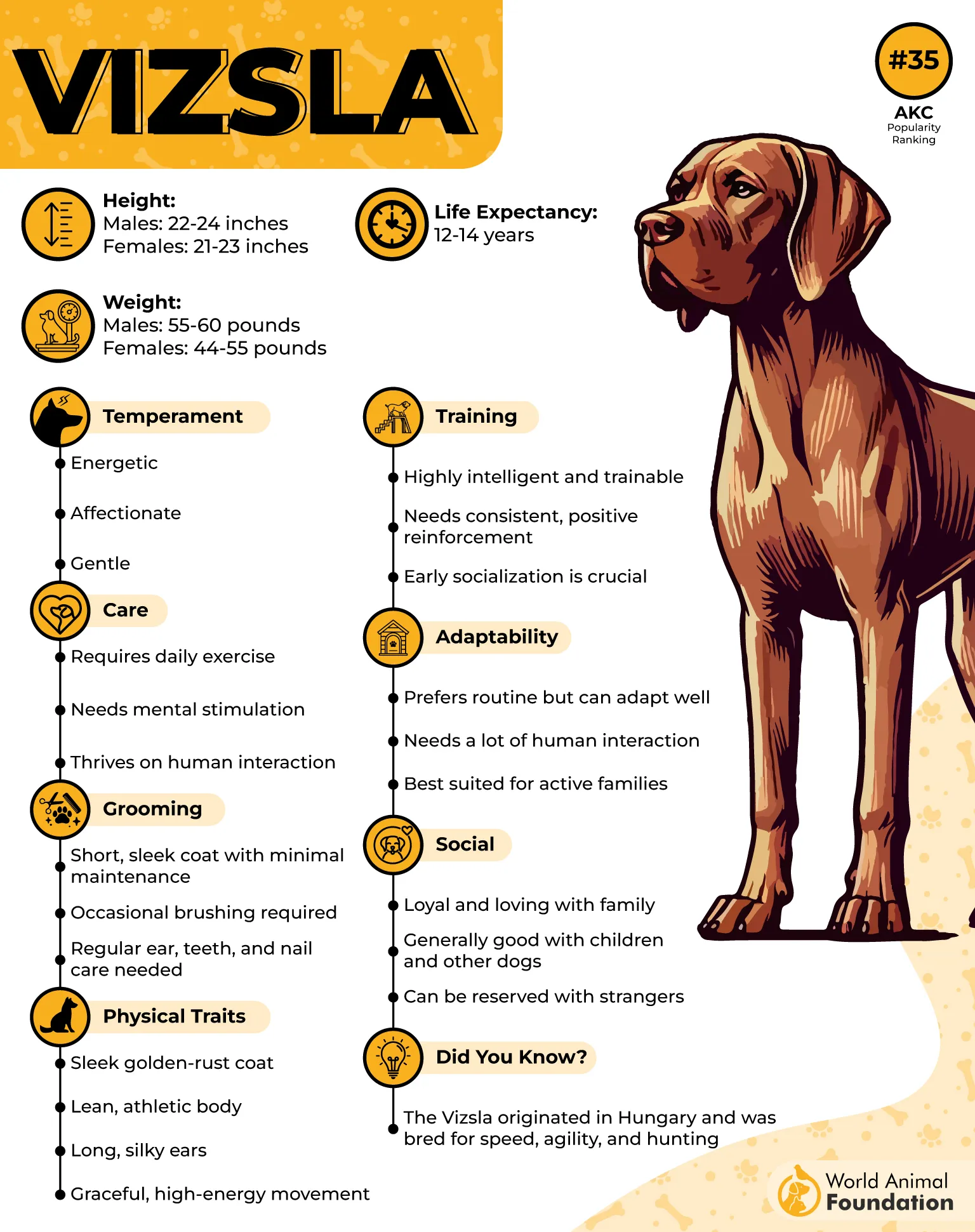
This breed doesn’t just want to be near you; they want to be attached to you, like the world’s most loyal, furry shadow who’s also a bit of a nervous nelly when left solo.
Why the Anxiety? Vizslas are bred to be close hunting partners, so they crave constant companionship. Being alone? That’s basically their version of a horror movie.
How to Help: Lots of exercise (long runs, hikes, fetch marathons), mental challenges, and gradual training to build alone-time tolerance are key.
Expect the occasional worried whimper or frantic pacing if you dare to leave the room without them. They’ll greet you with full-on puppy eyes that scream, “Where did you go?!”
6. German Shorthaired Pointer

Say hello to the German Shorthaired Pointer (GSP), a high-octane athlete known for boundless energy, a nose that never quits, and—sometimes—a serious case of separation anxiety.
German Shorthaired Pointers, often called “bird dogs,” are hunting dogs specially trained to locate and retrieve game birds.
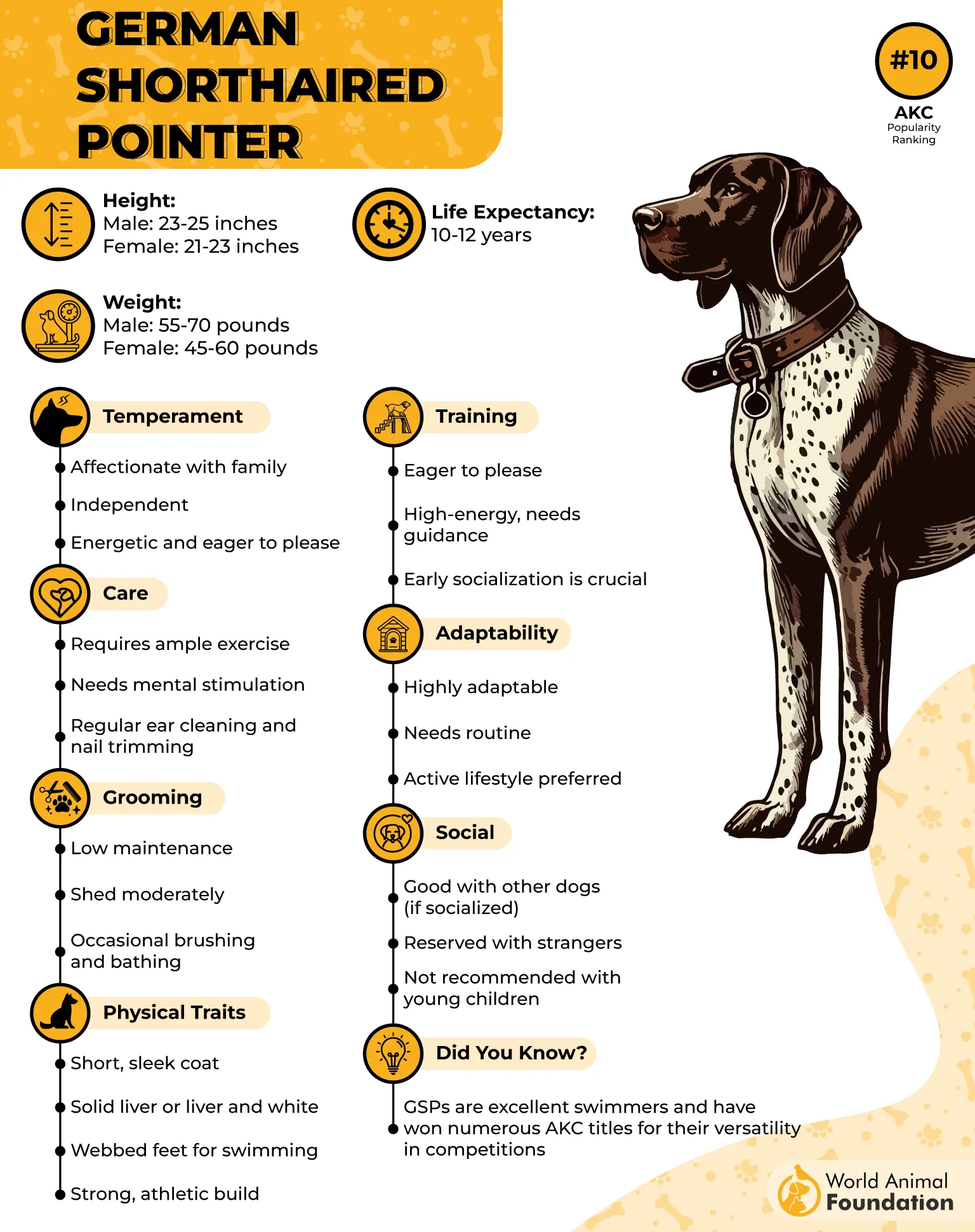
This medium-sized breed typically stands 21–25 inches tall and weighs between 45 and 70 pounds. They’re easily recognized by their distinctive patched and ticked coat, usually black or liver (brown) mixed with white, though some GSPs sport a solid liver color as well.
When left alone, this breed doesn’t just chill; they plot ways to keep busy (and maybe redecorate your place with a few chewed shoes).
Why the Separation Stress? GSPs are bred to be active hunting companions who thrive on constant engagement. Without enough physical exercise and mental challenges, boredom creeps in—and with boredom, anxiety follows.
How to Help: Daily long runs, puzzle games, and interactive toys are must-haves. Crank up the exercise, create a cozy “safe space,” and practice gradual alone time to build their confidence.
If you want a loyal, athletic buddy who loves to explore but might get a little jittery when solo, the German Shorthaired Pointer has your back — and your sneakers. Just be prepared to keep their minds and bodies busy, or else!
7. Lagotto Romagnolo
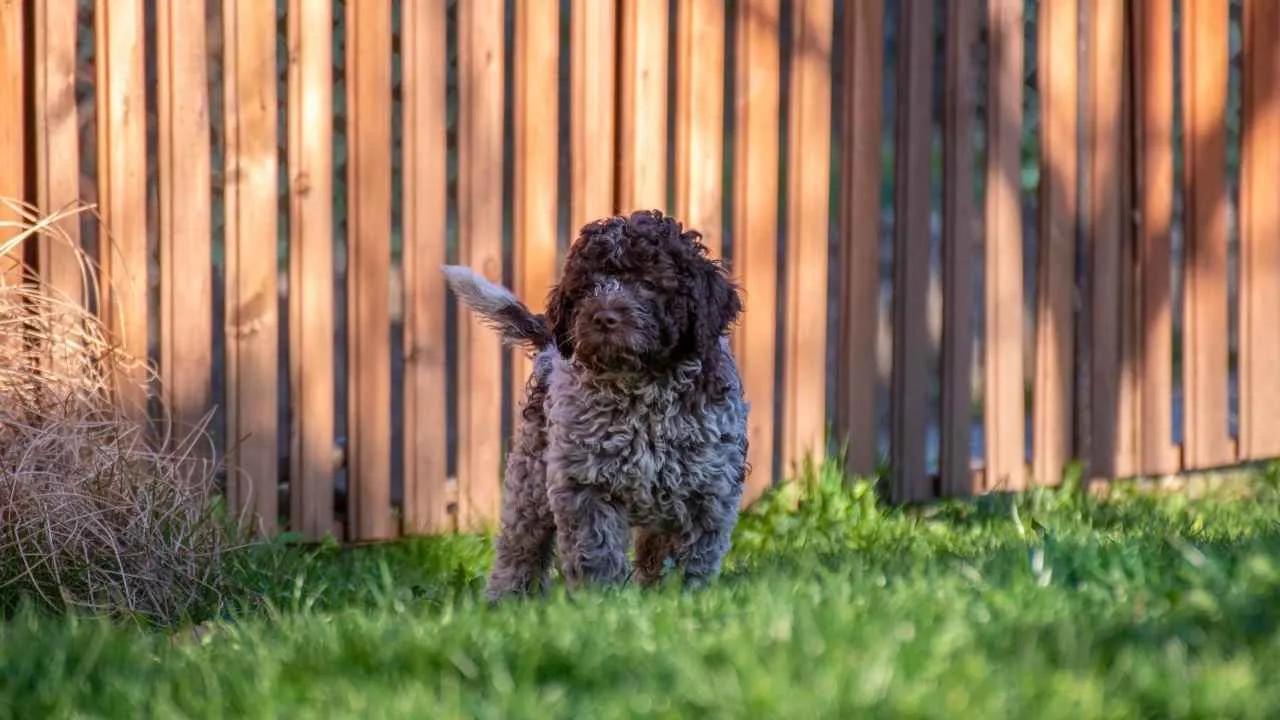
Say hello to the Lagotto Romagnolo, the curly-coated Italian treasure hunter famous for sniffing out truffles — and sometimes, sniffing out stress in the air. This breed is a master of the nose but a bit of a sensitive soul underneath all those adorable ringlets.
Lagottos hold the unique distinction of being the only purebred dogs officially recognized as specialized truffle hunters, says WebMD. They are a medium-sized breed known for their dense, curly, woolly coat. This ancient working dog also makes for a fairly laid-back and loving companion.
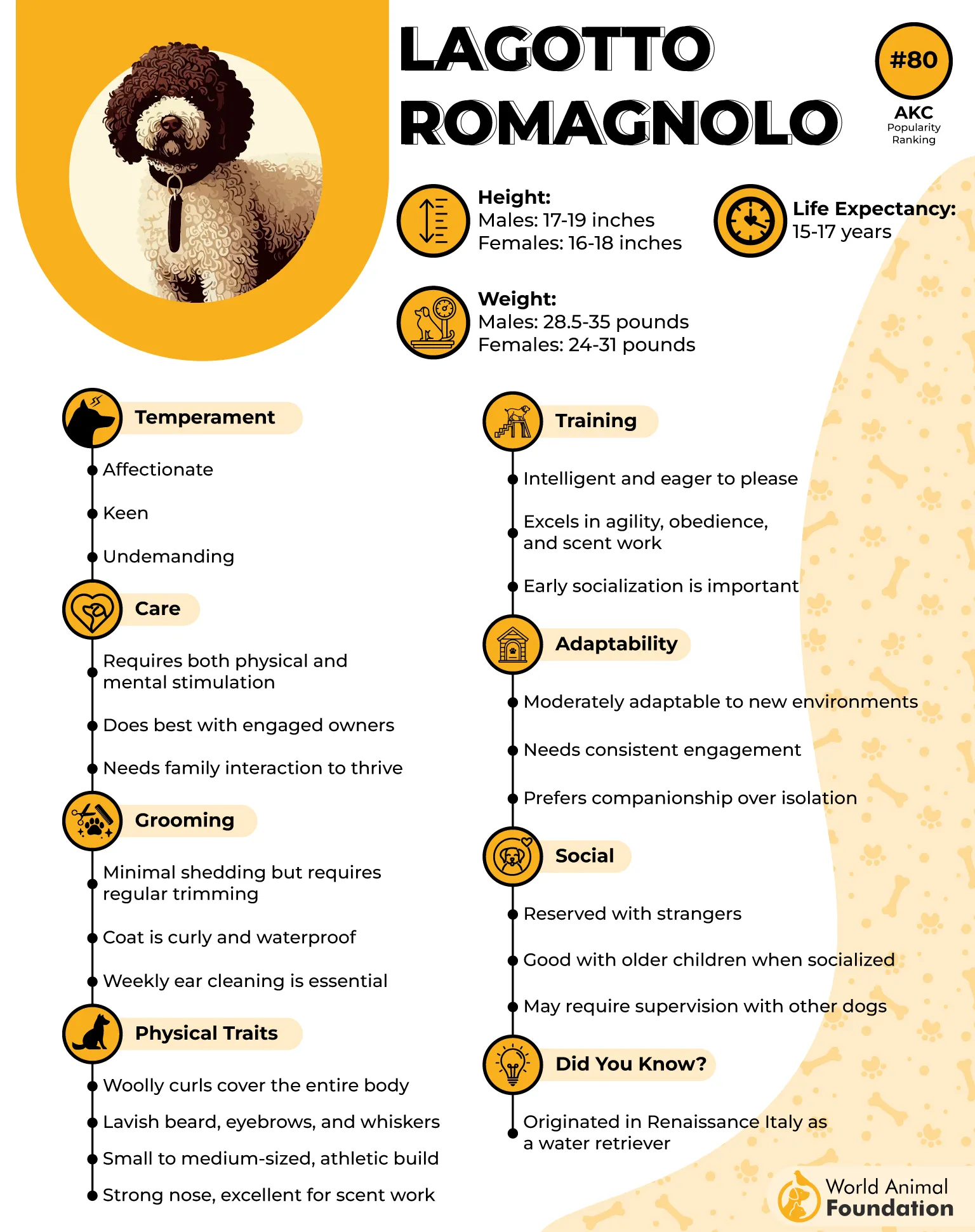
They’re often wary of strangers and new situations, sometimes expressing their nerves with vocalizations or pacing — basically saying, “I’m on high alert, but also kinda stressed, please send belly rubs.”
Why So Anxious? Lagottos are highly intelligent and super in tune with their surroundings, which means they can get overwhelmed by loud noises, sudden changes, or being left alone too long.
How to Help: Adequate socialization, plenty of mental and physical exercise (hello, truffle hunts and puzzle toys!), and a calm, predictable home routine keep their worries in check. They also thrive on affectionate attention — these pups want to be your loyal sidekick, not your stressed-out shadow.
If you want a curly-coated companion who’s equal parts detective and drama queen, the Lagotto Romagnolo is your perfect mix of brain, heart, and a little anxious flair.
8. Shetland Sheepdog
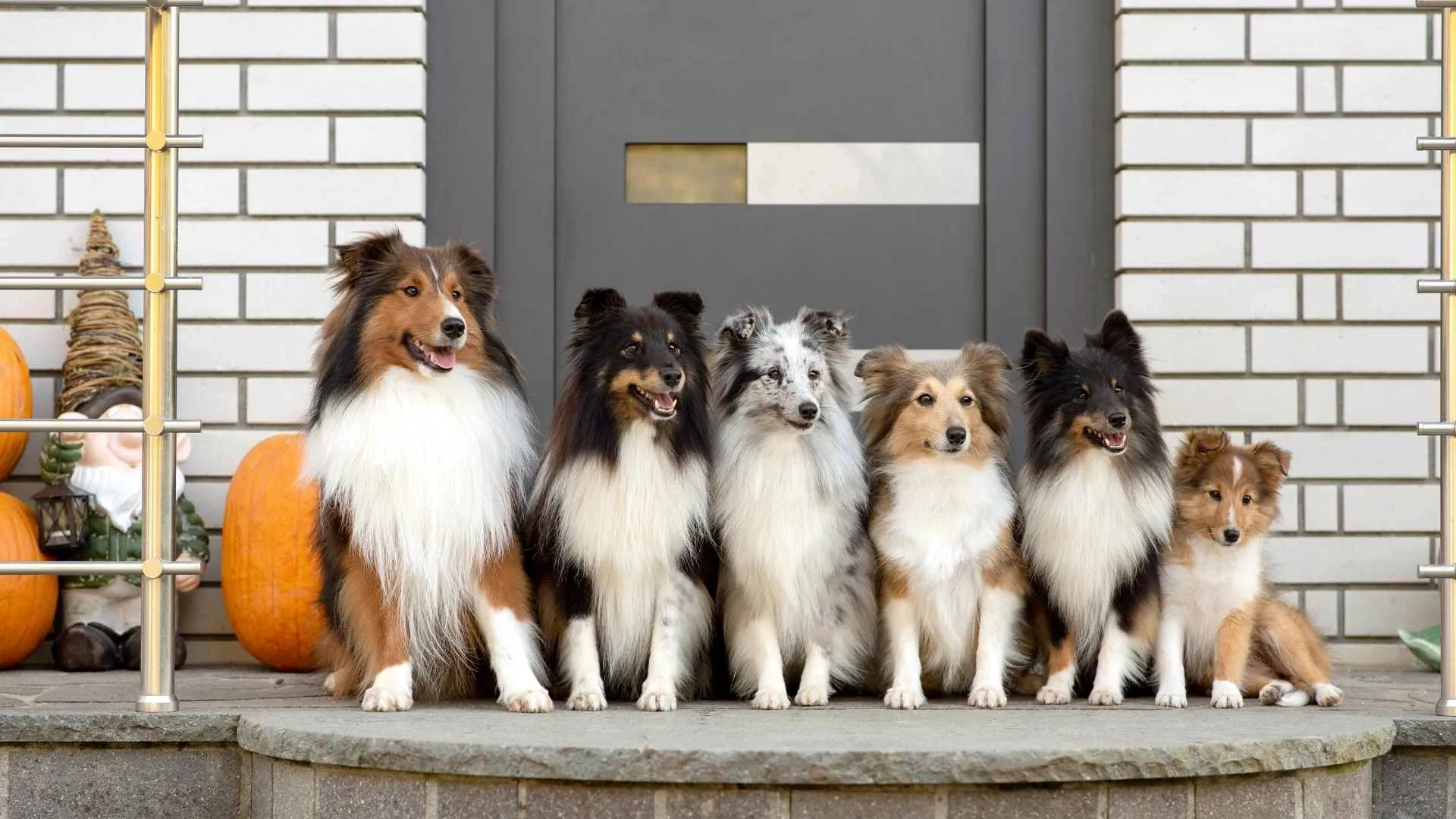
Meet the Shetland Sheepdog, or “Sheltie” for short — a gorgeous, fluffy bundle of smarts, energy, and… anxiety. These little sheepdogs are basically the canine equivalent of that coworker who triple-checks their emails before sending and nervously reheats their lunch three times just to be safe.
The Shetland Sheepdog is a small, lively, and nimble herding breed that stands around 13 to 16 inches tall at the shoulder. It features a long, harsh, and straight coat with a thick undercoat, available in colors like black, blue merle, and sable, all often accented with white markings.
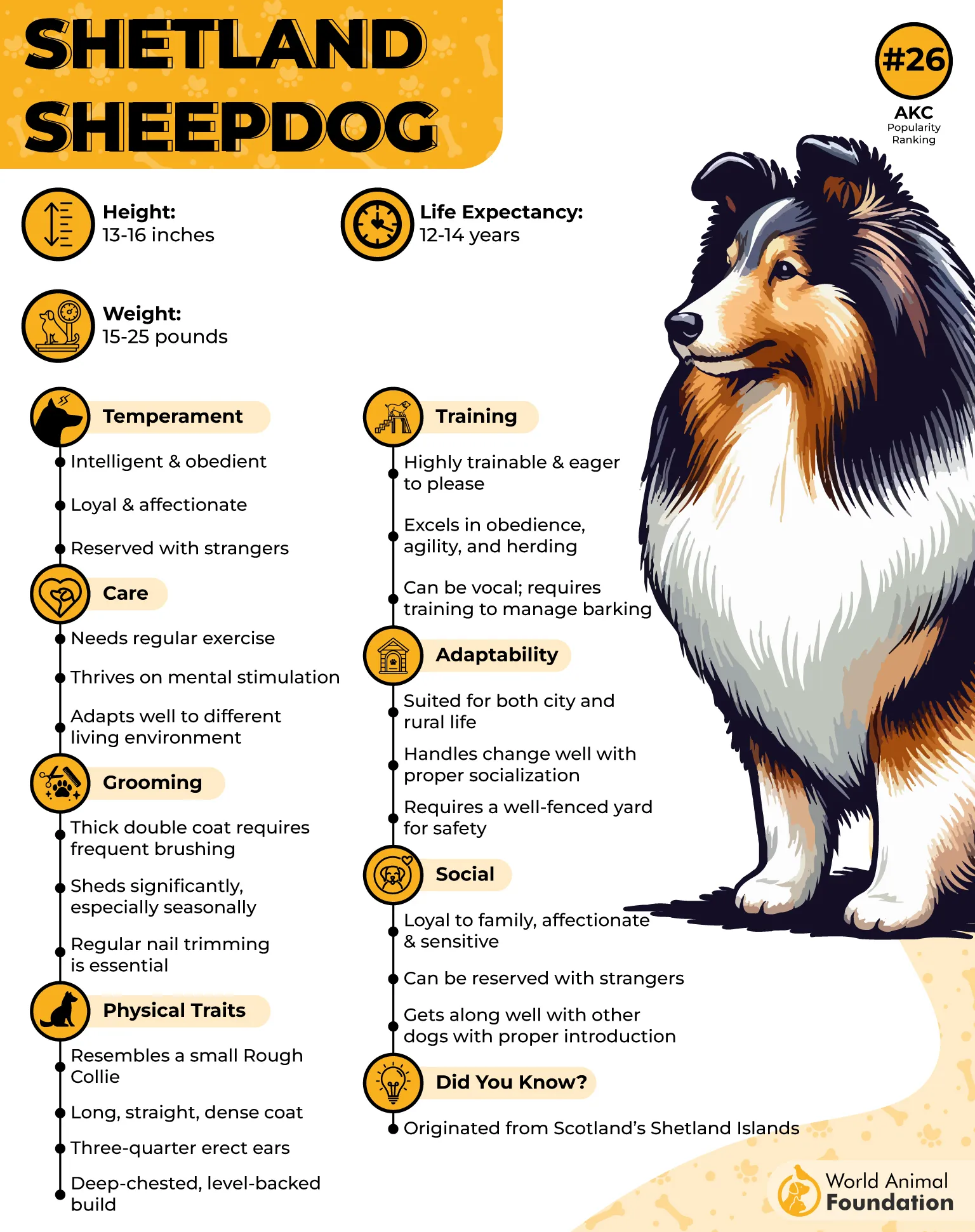
Why the Worrywart Vibes? Shelties are highly sensitive and intuitive. They pick up on every little change in their environment (and your mood), which makes them prone to stress and nervousness. Stranger at the door? Immediate alert!
How to Help: Consistent training, socialization from an early age, and lots of mental exercise help calm those overthinking brains.
According to the AKC, Shelties are sensitive and affectionate family dogs, deeply attuned to the emotions and atmosphere of their home.
Their natural herding instincts mean they tend to be vocal and protective — often barking at sounds or situations that most dogs might ignore. This can be a sign of anxiety or just their way of saying, “I got this, but also… I’m worried.”
9. Miniature Schnauzer
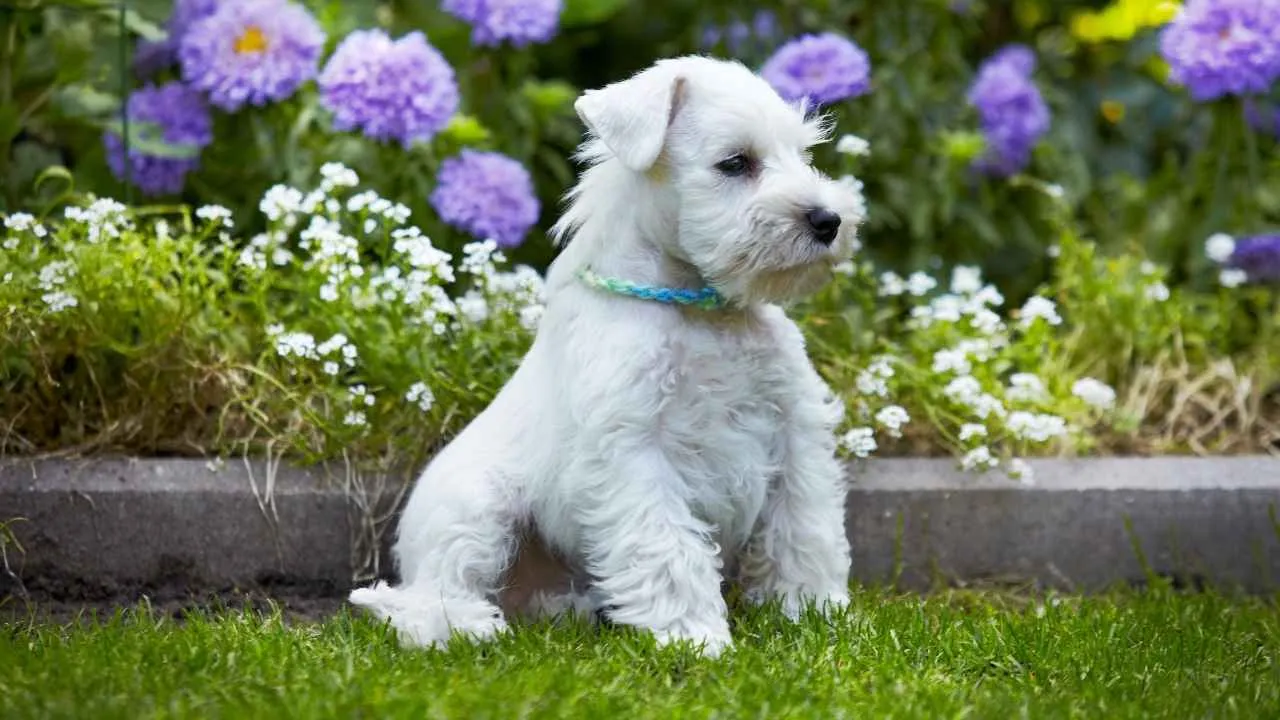
Ah, the Miniature Schnauzer: a small package with a big personality… and often a big worry list. These scruffy little charmers have alert minds that soak up every noise, shadow, and suspicious leaf. They’re basically the canine equivalent of that friend who triple-checks if the door is locked before bedtime.
Today, the friendly and clever Miniature Schnauzer is a fantastic and versatile family companion. These small dogs typically stand about 12–14 inches tall at the shoulder and weigh between 10 and 20 pounds.
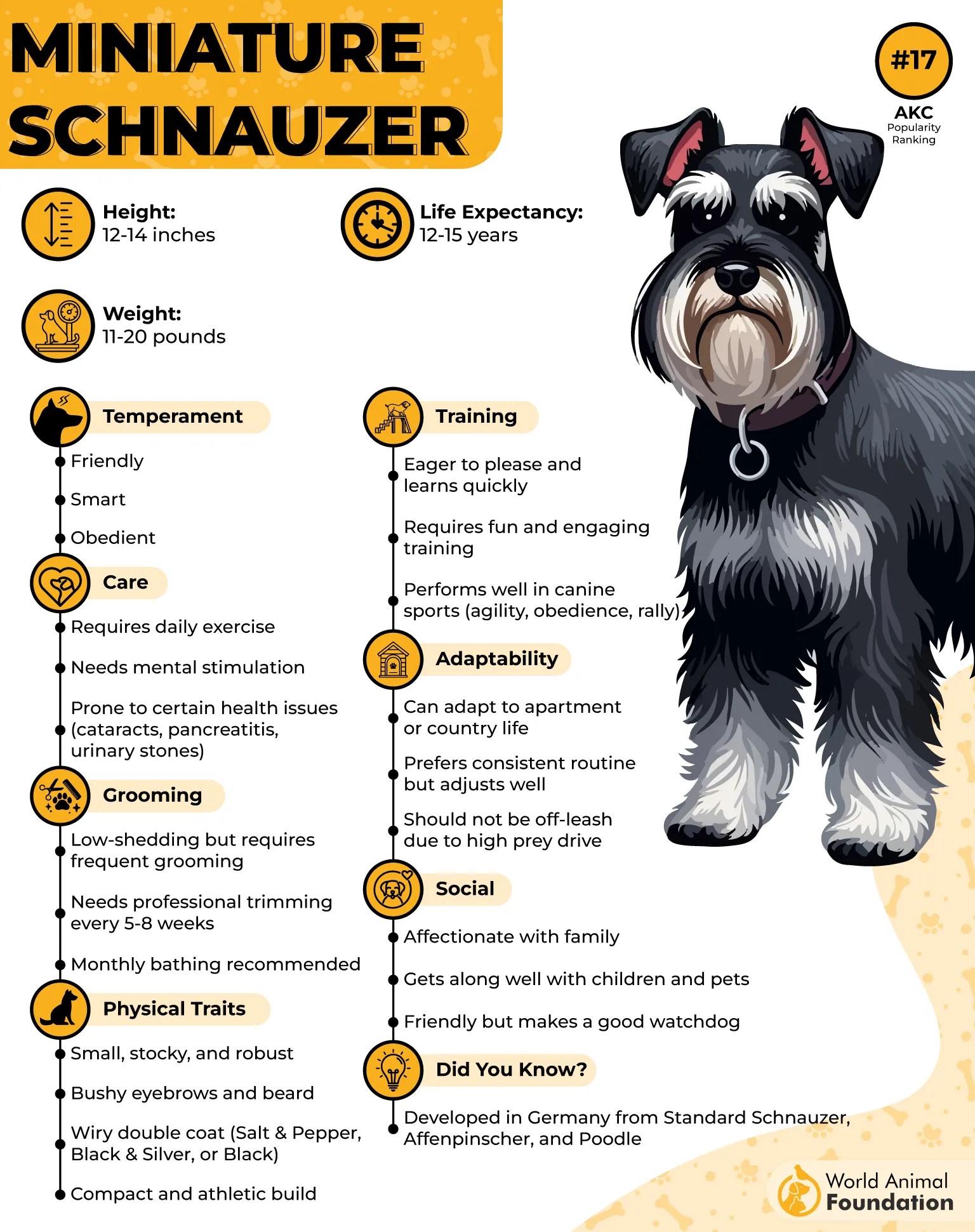
Why So Anxious? Their guarding instincts mixed with a sharp awareness make them prone to nervousness, especially when left alone or in unfamiliar situations.
How to Help: Mental stimulation (hello, puzzle toys!), consistent routines, and plenty of love are their best medicines. Bonus points if you can distract them with a funny hat or a new squeaky toy.
If anxiety had a face, the Mini Schnauzer would be the poster child — adorable, intense, and just a little bit high-strung. But hey, those expressive eyebrows and twitchy whiskers? Totally worth the worry lines.
10. Cocker Spaniel
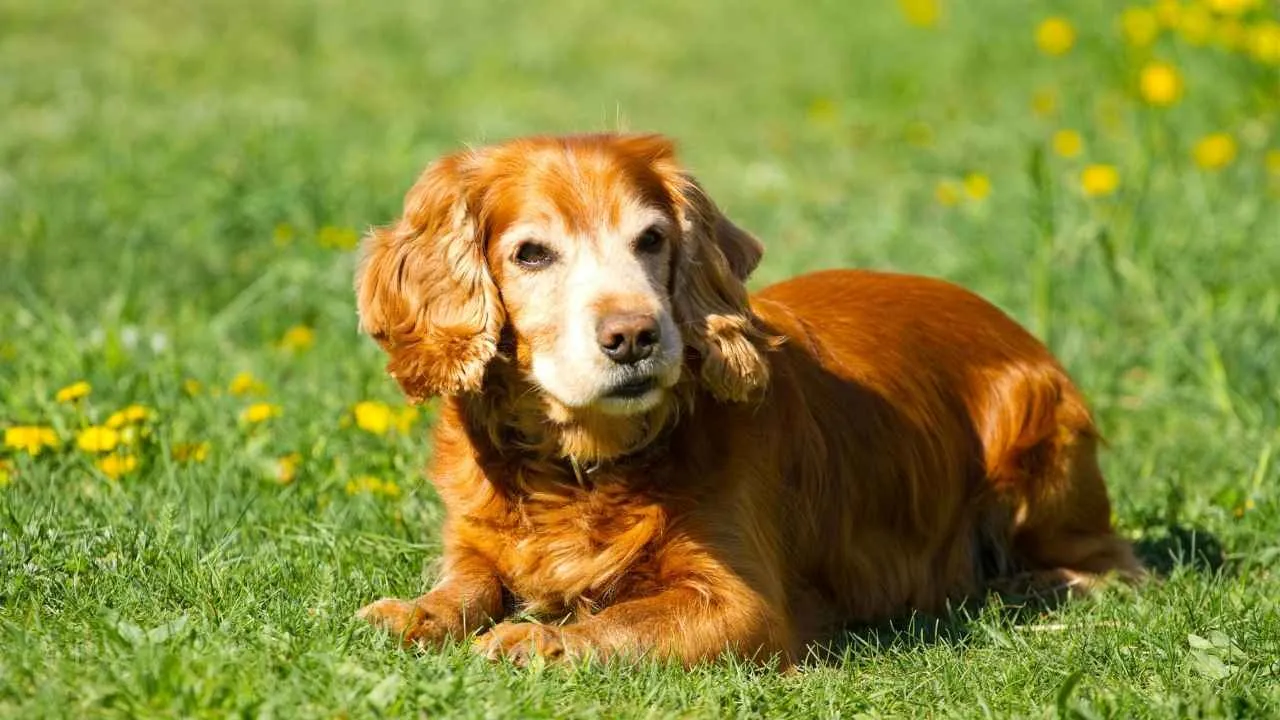
The Cocker Spaniel, often known as the American Cocker Spaniel, ranks among the most beloved dog breeds worldwide thanks to its large, expressive eyes, long floppy ears, adorable face, and lively, friendly nature.
Cocker Spaniels are like the friendly neighbors of the dog world—always ready to wag, say hello, and make a new friend wherever they go. Their sweet, sociable nature makes them absolutely lovable, but it also means they really hate being left alone.
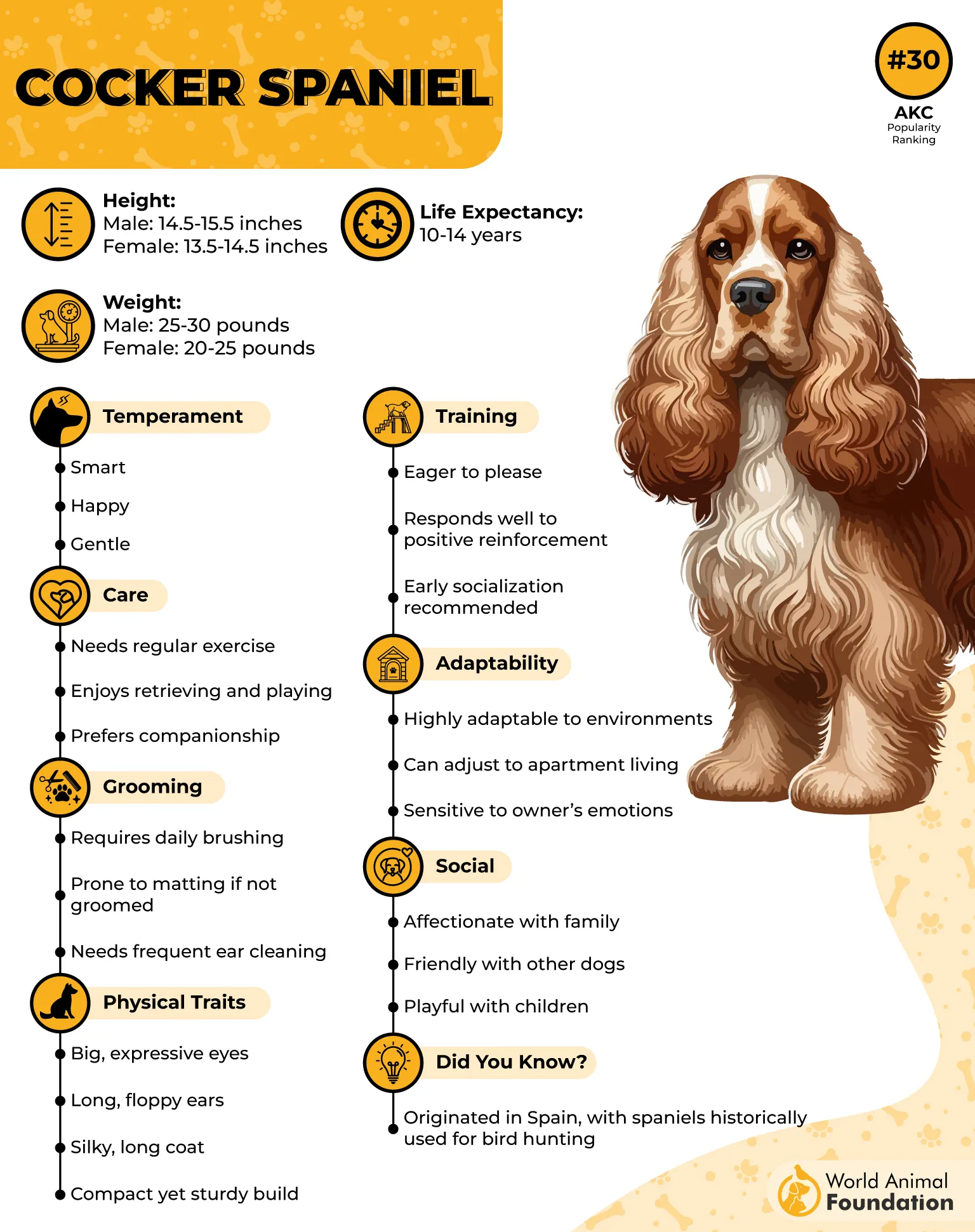
They are wonderful companions, perfect for first-time pet owners as well as families with both adults and children. Left alone too long, these pups might show their stress through whining, pacing, or even destructive behavior — basically throwing a tiny canine tantrum
Why the Anxiety? Cocker Spaniels form deep bonds with their humans and thrive on companionship. According to PDSA, they’re prone to separation anxiety, which means even a few hours solo can feel like an eternity.
How to Help: Having a daytime buddy, dog walker, or pet sitter can save the day. Lots of interactive play and a comforting environment help too.
If you want a loving, outgoing companion who’ll greet every visitor like an old friend — but might panic a bit if left alone too long — the Cocker Spaniel is your affectionate, sensitive soulmate.
Conclusion
Certain dog breeds prone to anxiety, like the Border Collie, Toy Poodle, Bichon Frise, and Cavalier King Charles Spaniel, are often companion dogs that were originally bred to herd livestock or closely bond with their human family. Their acute sensitivity, high intelligence, and protective nature make them loving furry friends—but also more likely to develop fear-based anxiety or exhibit behaviors like excessive barking, destructive chewing, or anxiety disorders if not properly managed.
These breeds thrive with physical and mental stimulation, human interaction, and consistent care from dog owners. When left alone too long, especially from a young age, they may experience anxiety triggers—particularly separation anxiety—and exhibit destructive behaviors. An active dog without proper physical stimulation or one dealing with chronic pain can exacerbate anxiety. To prevent anxiety-driven behaviors, it’s crucial to understand the dog’s needs and provide the right support—because dogs thrive best when they feel safe, engaged, and truly part of the human family.


